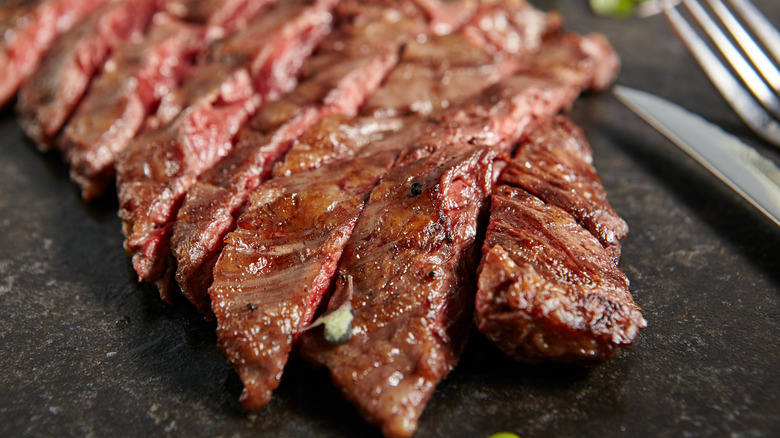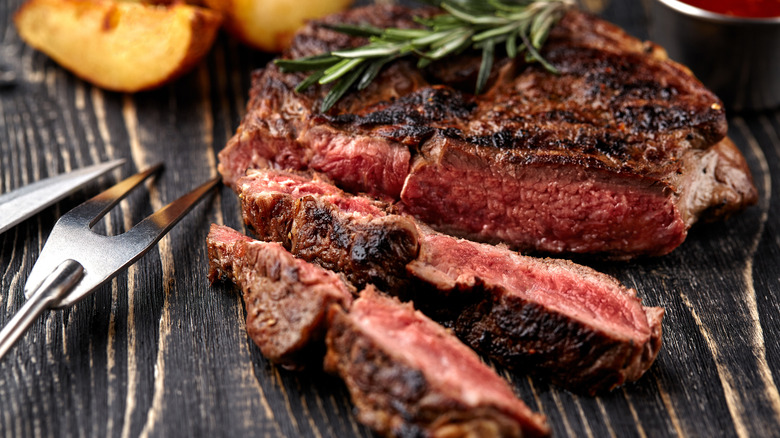The Flank Steak Cooking Rule You Should Never Break
While cooking can sometimes involve improvisation, this flank steak cooking rule is meant to be followed to the letter. The difference between a tender, luscious piece of beef and a chewy, tough mess comes down to one simple trick. If you have ever ruined a piece of flank steak, you might have broken this cooking rule. Food Network shares that high heat is the cooking secret. By cooking the beef more quickly, with high heat, the final result should be less tough. In some ways, hot and fast should be the flank steak cooking mantra.
Even with the high heat, quick cook method, there are several ways to prepare flank steak. While Kansas City Steaks recommends grilling as the best option, pan-searing, stir fry, or even broiled in the oven are also a good choice. Care should be taken to cook the flank steak evenly, especially if there is varying thickness. In addition, as a lean cut of meat, it is often recommended that the protein's temperature be prepared to a range of rare to medium. Lastly, while the proper cutting method is essential, don't forget to let the meat rest before slicing. If cut too soon, all the flavor will wind up on the cutting board. Even when cutting against the grain, losing all the flavor does not make for a tasty piece of meat.
Best marinades for flank steak
After perfecting the flank steak cooking rule, a few steps need to be taken before the meat hits the flame. As a lean cut of meat, a marinade can be a way to add flavor (via The Spruce Eats). Some recipes combine ingredients, so that each element helps to tenderize the flank steak. Finding the right combination is important not just to create flavor layers in a dish, but to ensure the best execution of the meal.
Delish breaks its marinade recipes into certain components. For example, it recommends a citrus component or even a soy sauce to bring the acid. This element helps for tenderizing. In addition, the inclusion of oil olive assists in the juiciness, which is important for a lean cut of meat. Lastly, it recommends brown sugar, which helps to create a caramelization when the steak hits the high heat. Thinking about these recommendations, there is a broader concept at hand. A marinade that includes an acidic component, a fat component, and a sweet component could turn that flank steak into a delicious bite. Just make sure to cook it properly, too.

